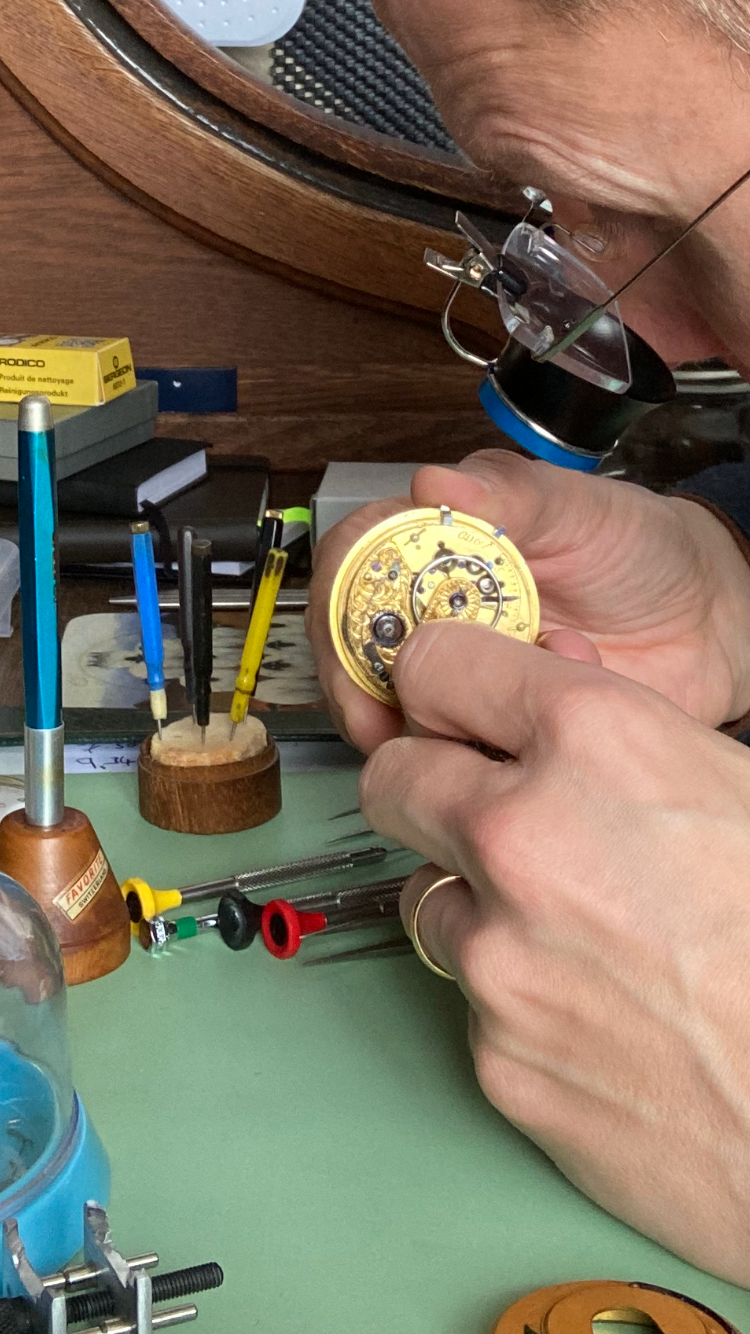Setting spring replacement - heat treatment?
-
Recently Browsing
- No registered users viewing this page.
-
Topics
-
Posts
-
By Neverenoughwatches · Posted
I'm guessing, but this commercial demag machine maybe produces random magnetic fields to re-randomise the iron particles. So heres one for you, synthetic rubies are coloured predominantly with chromium oxide . But natural rubies and old synthetic watch rubies were also coloured with iron oxide in higher percentages than chromium oxide. Which gave them a degree of.................🤔 -
I've never had a hairspring distort on me by passing the movement or just the balance in a plastic pot over this demagnetiser. Have you seen how fast a cleaning machine spins to spin-off fluid and that does no harm to a hairspring. I was a little concerned when I first used it, thinking it might be too strong, but I was wrong. It is strong, but it does no damage. I pass the part over the demagnetiser and keep going for about an arms length, so about a metre, to properly demag the part.
-
By HectorLooi · Posted
I don't think you would be able to find spare parts. Your best bet would be to get a new movement from eBay. https://www.ebay.com/itm/256508500506?itmmeta=01HY3M863PSA61GK7B859QCWTE&hash=item3bb9191a1a:g:ubgAAOSwrJJgPP-s&itmprp=enc%3AAQAJAAAA4DxWhpiQiz2ZjKpm3PS%2FHPh4IafsSzMWEobc2q4qQWgPGMZ8kCR8y2PRsm7GE31FjeSDYSWcEyGlrpZEdQyyzOSgsgsaPjbP7dYmK8r49Nh%2BEtSqDDIZ8Tbp3vvX035fFXgcjc1GEH8l%2FOWJ9aTeWNGzeBgUwqyhJ3ZSXji50TQr6rd38Sqwaqsj2oc51UVKqqIKySKTfxVB7X09EXcJsmeYc5GCdVODNkb02q2RsxfSIzpgl9dFCmW1Ih%2BPg2j2NziSELg5AfaHl%2FPU2Zn9fNnoVN1Z1NUAREyh2BCubcWC|tkp%3ABk9SR_bhoPTwYw -
By Michael1962 · Posted
Here's a thought. Try unscrewing the bezel and the crystal. If you have one of those sticky balls for undoing casebacks, I would give that a try. -
By ManSkirtBrew · Posted
Last week I noticed my Eco-drive's second hand was stopped at 12 o'clock. I left it in the sun for a few days and no change, so I figured it was time to replace the rechargeable battery. I've had this guy for at least 15 years. Replaced the battery and the seconds hand moved to about 5 o'clock and stopped there. I let it sit for a day in the sun, no change. I took the battery out and tested it, and it's at 1.4v. The old one was at 1.0v. I'd like to test if it's charging. I've been looking around for diagnostic info, but only been able to find the owner's manual. Anyone have a reference for it?
-









Recommended Posts
Join the conversation
You can post now and register later. If you have an account, sign in now to post with your account.
Note: Your post will require moderator approval before it will be visible.